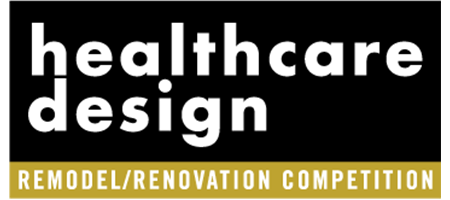Toni Candanedo, Associate, Landscape designer, SmithGroup (San Francisco)
In her sixth year as a landscape designer at SmithGroup (San Francisco), Toni Candanedo uses advocacy and education through her project work to prioritize nature and biophilic design in healthcare environments.
Candanedo graduated with a bachelor’s degree in landscape architecture from from Arizona State University (Tempe, Ariz.), where she studied in the Herberger Design School. She joined SmithGroup’s Phoenix, Ariz., office as an intern in 2017 and was hired as a landscape designer in 2018.
While Candanedo began her career focusing on the science and technology market, she became increasingly called upon to contribute to the vision behind the firm’s major healthcare projects. She has a reputation for setting clear visions for holistic design that intertwine the building and landscape, using the site to support the mission of creating a healing environment for patients, families, and staff.
Her projects include Gansu Provincial Hospital in Gansu, China, where she designed a 1-mile “River of Life” pedestrian pathway that weaves through the campus and seven garden districts that celebrate the community’s culture and heritage. Located in one of the lowest income areas of China, where there is little access to public open space, the project has become a hub for public health and well-being and hosts live music, art, and communal exercise.
At University of California Irvine’s Center for Advanced Care in Irvine, Calif., she researched neurodiversity to craft a therapeutic garden for autism patients, which features a decompression hut, gardening area for children, and small play experiences to aid in healing. Building on that work, she’s creating inclusive outdoor spaces at the University of California, San Francisco, Benioff Children’s Hospital in Oakland, Calif. The design includes a gradient of sensory design experiences to better serve children with autism. Inspired by the Temescal Creek culverted on the site, the design mimics the experience of walking along its banks and features learning moments based in STEAM (Science, Technology, Engineering, Art, and Math) principals throughout.
She is also driven to set new industry standards on inclusivity in design, focusing on neurodiversity. She serves as vice president of the Northern California Chapter of the American Society of Landscape Architecture, and, along with a colleague at SmithGroup, launched the SHINE (Sustainable, Holistic, Inclusive, Neurodiverse Environments) Framework to help guide architects, interior designers, and landscape architects in incorporating neurodiversity considerations throughout the design process.
Through her project work, Candanedo focuses on educating healthcare clients about nature’s integral part of design and how to appreciate the essential therapeutic role that outdoor spaces have on the personal and communal experience of healthcare.
Path to healthcare design: I began my career with SmithGroup as an intern in our Phoenix office, primarily working on projects within the science and technology market. In 2018, I joined the Gansu Provincial Hospital Complex project, which sparked an interest in healthcare and relocated me to San Francisco, a major hub for the firm’s work in this market. Being surrounded by world-class healthcare architects and their wealth of knowledge inspired me to transfer their perspectives to landscape design. My passion for designing spaces that prioritize the patient’s experience, celebrate neurodiversity, and emphasize wellness for communities in need has drawn me in even deeper to healthcare design.
Describe your design approach: Collaborate across disciplines to feature unique, innovative, and educational spaces.
On your desk now: I’m currently focused on the University of California, San Francisco, Benioff Children’s Hospital in Oakland, Calif., a new 7-story bed tower. The landscape design is centered on designing for neurodiversity throughout the hospital campus and showcasing how all spaces can be inclusive without compromising cost or design aesthetics. We are grateful to work with partners who share our values in inclusive design and encourage us to not only meet the standards of accessibility but surpass today’s design expectations. This support has fostered a creative environment that challenges us to design for neurodiversity at a large scale.
Most rewarding project to date: It’s difficult to choose one, so I’ll share one for every phase of my career as a landscape designer. The Gansu Provincial Hospital Complex in China, because it was my entry point to healthcare design. Allensworth Passage, a cross-office, cross-disciplinary design competition, stood out to me as a prime example of a multidisciplinary effort done well. It showcases lessons learned for all the sectors I’ve touched, from healthcare design to my work in higher education. Lastly, the UCSF Benioff Children’s Hospital will leave a lasting, positive impact on my career and will undoubtedly become my most rewarding project to-date.
What success means to you: The design team should always start by reflecting on whether the project has met the initial goals and values, and if it has met—or even better, exceeded—the community’s needs. To confidently say “yes” to both, it really comes down to the team dynamic. I believe that when the team truly collaborates, communicates, and works well together, success follows naturally. Plus, when the team respects different disciplines, diverse perspectives, the client’s vision, and the surrounding community, it’s almost guaranteed to be a successful outcome.
Industry challenge on your radar: Designing for neurodiversity. As a design industry, it’s important we find ways where we can incorporate neurodiversity into a design program and ensure this is top of mind early in the design process. My colleague, Ryan Boe, and I, were recently awarded an Exploration Grant from SmithGroup to further explore and research this important healthcare topic.
Must-have skill for healthcare designers today: Empathy. In a sector where the end user is generally entering the space under vulnerable, sensitive and precarious situations, there must be the desire to not only deeply understand the situation most people experience in a healthcare facility, but to truly care about and be sensitive to patient needs and diverse perspectives.
Click here to read more about all of HCD’s 2024 Rising Stars.











